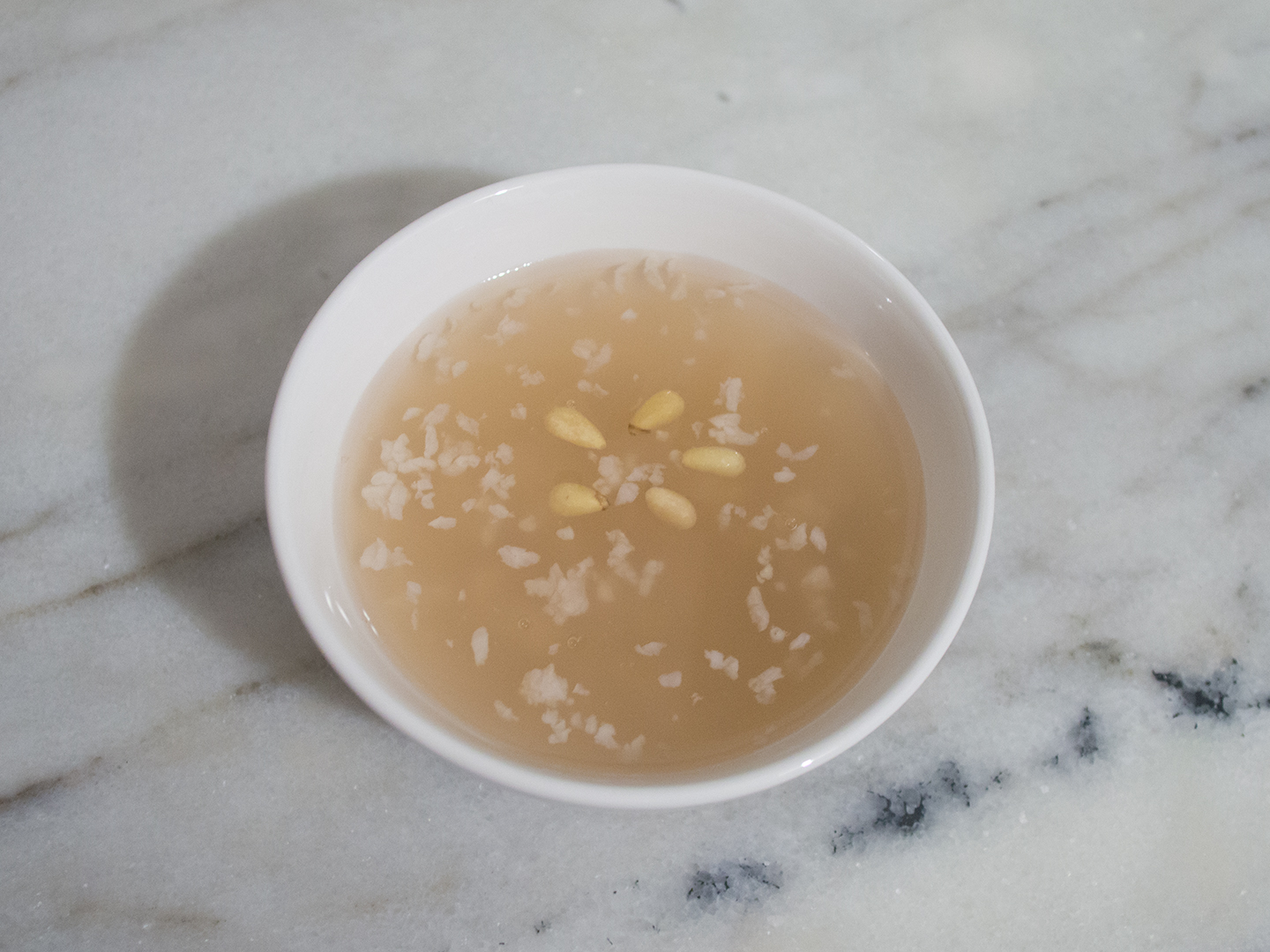
The first time my mom gave me Sikhye, I couldn’t stop smiling. I *loved* the subtle sweetness that cleansed my palette after eating a savory meal. The added bonus was the rice and sweet pine nuts floating in the serving bowl. I would go fishing with my spoon to gather all of the grains, and thoroughly enjoy every sip and bite. It didn’t matter how full I was from dinner; I always requested a second serving!
Unfortunately, my chances of drinking homemade sikhye began to wane when my great-grandma became ill. I was only eight or nine when she went into hospice care, and my grandma increasingly became occupied with her welfare. Cooking just started to be for nourishment, and recipes like this dropped to the bottom of the pile. My mom knew the basics of the recipe, but never really attempted to make it at home. My only chances of drinking this amazing beverage were when we were visiting Korea and my dad’s mom would make it for us, or if we bought the *stuff* from the Korean market. That *stuff* just didn’t taste the same.
Fast forward about a decade… my parents and I decided that we needed to start making this at home; so, naturally, we flipped through some recipes, thought about how both grandmas used to make it, did some more research, and came up with a solid recipe. There was a good year where we just made it non-stop! Our rice didn’t really float, but goodness, that yummy malty flavor was totally there! It didn’t taste syrupy or sugary like the ones from the market. My smile came back.
Jump forward another decade, and Kitty and I were engaged and living together in the City! We were making a lot of food together, and often talked about what we enjoyed eating in our childhood. It quickly became apparent that we needed to make this drink. I followed the same ratio of ingredients I used to use at my parent’s home, and it turned out perfect! Every time since then, when that craving came around, we would make it. We made it so many times in our tiny kitchen in Brooklyn. When Summer came around, all we wanted to drink was Sikhye!
After a few years, and doing some more research on making this excellent elixir, I’ve made some adjustments and decided on the recipe below. I hope you all fancy this drink as much as we do!
Recipe for Sikhye (식혜) - Korean Rice Drink
- About 2-2½ Liters (About 2-2½ Quarts)
- Preparation:
- Cooking:
- Waiting:
Ingredients
- 125g (about ¾-cup) coarsely ground Malted Barley, dry
- 2½L (about 85 fl oz) Water
- 150g (¾-cup) White Rice, dry
- 100-150g (½-¾-cup) Granulated Sugar
- Pine Nuts, for garnishing
Procedure
- In a large bowl, hydrate the malted barley for 1 hour in lukewarm water. Drain and top up the bowl with 1½ liters of room temperature water. Gently stir, massage the barley with a spoon or spatula, and let the contents sit for 30 minutes, or until the barley and cloudiness settles. Using a fine-mesh sieve, slowly pour out the clear liquid into a large pot, leaving the barley and white sediment in the bowl. Pour the rest of the water into the bowl, and repeat the process for the second liter of water.
- While waiting for the barley to settle, rinse and cook or steam your rice according to regular instructions.
- Take the large pot and heat the clear liquid to about 104°F (40°C). Turn off the flame and combine the warm rice with the liquid into your rice cooker. Switch on the cooker to *Keep Warm*, and leave it for 5-6 hours.
- When the rice kernels begin to float, scoop up all of the rice and give it a rinse under cold water. Drain and refrigerate in a sealed container.
- Pour the warmed liquid into the pot and bring it to a boil. Keep a steady boil for about 5-8 minutes. Skim off any foam that comes to the top. Turn off the flame and slowly add the sugar. Stir, taste, and see if you need to add more. Cool the malt liquid and refrigerate for 4-6 hours, or overnight.
- When ready to eat, combine the liquid with a scoop of rice, add a few pine nuts, and serve!
*Bunny Wisdom*
- You can find malted barley in the Korean supermarket! It's called 엿기름 (yeotgireum), and it comes in two different milled forms: fine and coarse.
- I hydrate with some lukewarm water to activate the malted barley. During the Summer, I use cool water because the warmth can ferment the mixture and make it turn sour.
- You can easily bring all 2½ liters together with the soaked barley, but I prefer portioning the liquid into two; this allows a longer hydration period, drawing out more flavors in the second round.
- Additionally, I have left the mixture sitting for more than 30 minutes; if you keep the contents in a cool environment (or even the refrigerator), you can draw out more flavors from the malted barley, without the risk of the mixture turning sour and undrinkable.
- The liquid that you pour out has a yellow tint. Try your best to not pour any of the sediment and barley bits into the pot. Pour slowly to prevent the malt liquid from getting cloudy.
- We use short to medium-grain white rice, and have also used sweet rice to make sikhye.
- If you have a rice cooker, cook your rice following your cooker's measurements and instructions. I steamed my rice in a pot for 35 minutes wrapped in cheesecloth, until it was firm, chewy, and al dente. This gives the rice a drier texture, perfect for the long 5-hour immersion.
- Many Asian rice cookers are measured using the metric measurements, so a good rule of thumb for us here at Everybunny HQ is: Asian 1-cup = 160g short-grain white rice (dry weight) = US ¾-cup, plus about 1T. So, if you are planning on cooking a cup of rice, it usually means that the measurement is less than a US cup. Truthfully, it doesn't entirely matter how much rice you put into your sikhye. You can choose to add 1½-cups (240g, dry weight) of rice, or use less than that. It's up to you on how much rice you want in your drink!
- If you don't own a rice cooker, you can heat the mixture on the range, maintaining a temperature of around 140°F (60°C) for 5-6 hours.
- The ideal bowl of sikhye has floating rice. This doesn't always happen, so don't be discouraged if your rice sinks. Rinsing the rice, after the long immersion, helps greatly in keeping those kernels afloat. It's only aesthetically pleasing, so if your only concern is about drinking the beverage, rinsing the rice (and containing it separately) isn't necessary. You can just keep the rice with the malt liquid, boil, cool, and chill.
- Much of the sugars are drawn out of the malted barley while heating the mixture. I don't always end up using the same amount of sugar. I add some to the boiled liquid, give it a good stir, and taste it to see if it needs more. Once it hits that sweetness threshold, I stop adding the sugar. Just remember that if it tastes sweet when it's warm, it will taste less sweet when it's chilled and served from the refrigerator.
- I've had sikhye with ginger; it's very tasty, and super easy to incorporate. When you're ready to bring the mixture to a boil, throw in a couple slices of fresh ginger, boil, and then fish out the ginger before cooling.
- When it's warm outside, we turn this into an icy slush. Freeze the liquid portion and, periodically, give the liquid a stir. This prevents the liquid from forming into a solid block of ice. Once it's to your liking, ladle some out and quench your thirst!
**Here are some of the ingredients I use for this recipe. Please, feel free to browse and ask questions on anything you see listed below.**


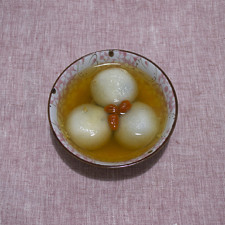
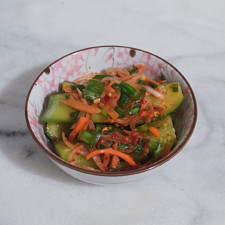
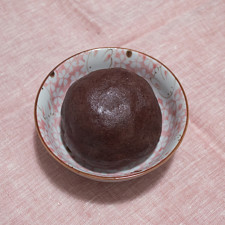
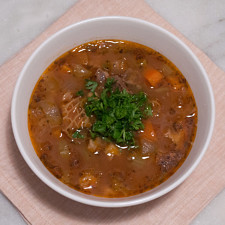
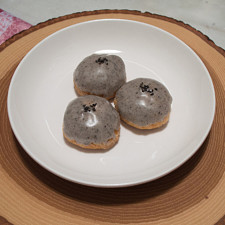
No thoughts on "Sikhye (식혜) – Korean Rice Drink Recipe."